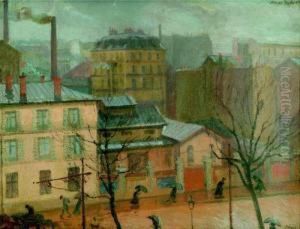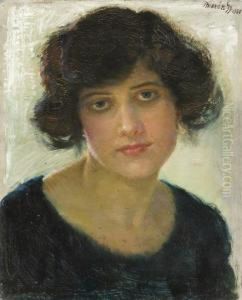Meresz Muller Gyula Paintings
Gyula Merész Müller was a Hungarian painter, born in 1886 in Budapest, Hungary. He was an influential figure in the early 20th-century Hungarian art scene, known for his contributions to figurative painting, particularly in portraits and landscapes. Müller's artistic journey began at a young age, showing an early aptitude for drawing and painting. He pursued formal education in art, studying at the Hungarian University of Fine Arts in Budapest, where he honed his skills and developed his distinctive style.
Müller's work was deeply influenced by the changing artistic movements of his time, including Impressionism and Post-Impressionism, which is evident in his use of color and light. However, he managed to forge a unique path that blended these influences with a strong sense of Hungarian identity, often focusing on scenes of Hungarian life and landscapes. His ability to capture the essence of his subjects with both realism and a sense of emotion won him considerable acclaim.
Throughout his career, Müller exhibited his work in numerous solo and group exhibitions, both in Hungary and abroad. Despite the challenges posed by the political and social upheavals of the early 20th century, including the two World Wars, Müller continued to produce work that resonated with both critics and the public. His contributions to Hungarian art were recognized with several awards and honors during his lifetime.
Müller's legacy extends beyond his paintings. He was also a respected teacher, sharing his knowledge and passion for art with a new generation of Hungarian artists. His influence can be seen in the works of his students, many of whom went on to have successful careers in their own right.
Gyula Merész Müller passed away in 1951, leaving behind a rich body of work that continues to be celebrated for its beauty, technical skill, and deep emotional resonance. His paintings are held in numerous public and private collections, serving as a testament to his lasting impact on Hungarian art.

